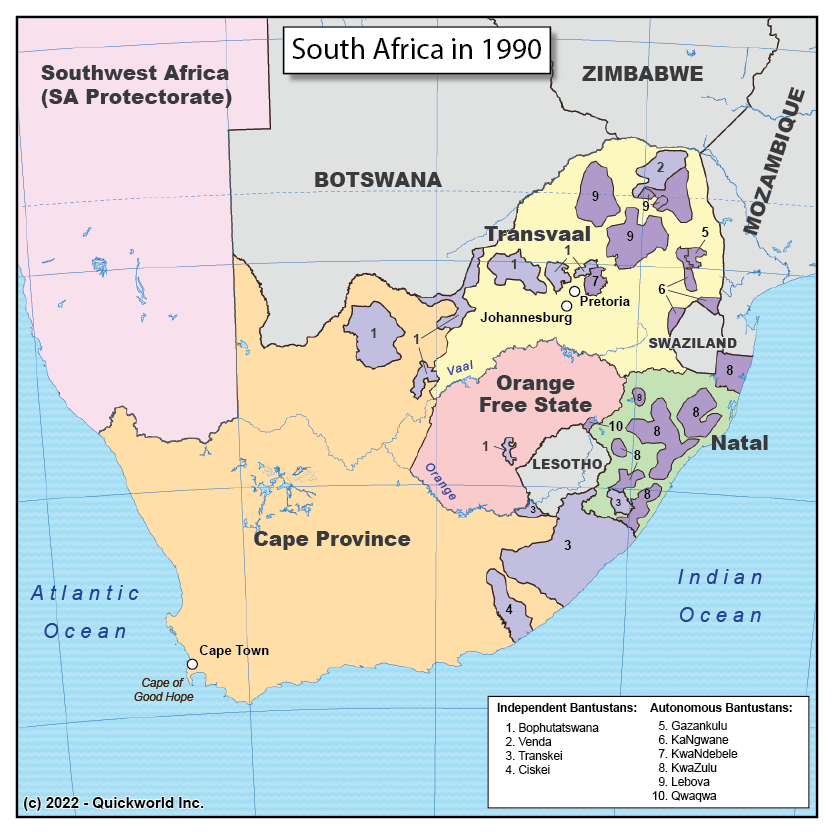From 1948 to 1991, the country of South Africa was ruled according to a regime known as Apartheid, after a Dutch word that means racial separation.
While the formation of the Union of South Africa in 1910 was made possible by the defeat of secessionist Boer entities against the British Army, the Boer themselves, or Afrikaners, descendants of Dutch settlers under the Dutch East India Company, remained by far the largest group of European descent within the new country. The survival of this distinct society of Europeans and mixed race people had always been under existential threat from the various conflicts with Bantu tribes and brutal repression they had suffered under the British regime.
Since voting rights in the new country were limited to people of European descent, the National Party, mostly composed of Afrikaners, took power in 1948 and proceeded to pass racial laws that classified individuals according to race and left the majority of the population, people of Bantu origin, without any political rights. Increasing international outcry about that situation led the South African regime to double down on their racist policies by creating "Bantustans", ridiculously small territories deemed to be the homelands of various Bantu ethnic groups. While the vast majority of the Bantus lived outside of those areas, they were deemed "guest workers" in South Africa, where they often lived in abject poverty with no political representation.
Over the years, 10 of those Bantustans came to existence. Four of these allegedly reached full sovereignty in the 1980s, although no country ever recognized them. A vast campaign of international boycott led the leaders of the National Party to start negotiations with the outlawed African National Congress. Racial laws were formally abolished in 1991 and Nelson Mandela, leader of the ANC, was elected president of South Africa in 1994. The new constitution formally abolished all Bantustans and created nine provinces out of the four existing provinces and 10 Bantustans.
Apartheid South Africa


